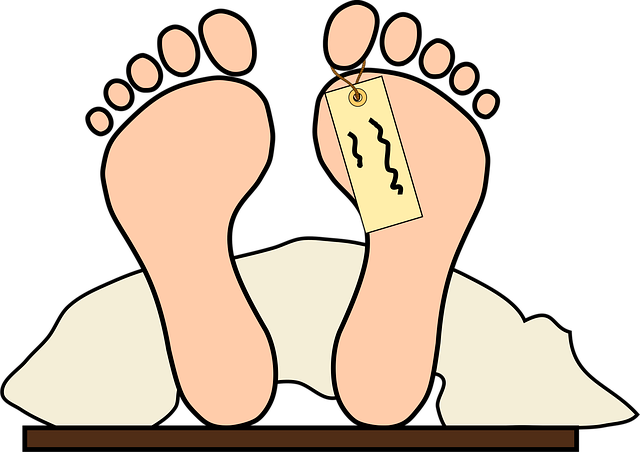By Tim Lambert
Burke and Hare are often called grave robbers. In reality, they did not rob graves. Instead, they murdered people and then sold the victims’ bodies to surgeons for dissection. Today, many people donate their bodies to science but in the early 19th century, attitudes were very different. Most people were horrified by the idea of being cut up after they were dead. As a result, surgeons found it hard to find bodies to dissect in lectures. So some were willing to pay large amounts of money for dead bodies, without asking too many questions. Burke and Hare are believed to have murdered 16 people.
William Burke was born in Ireland around 1792, and it’s believed he came to Scotland to work as a navvy on the canals. He eventually settled in Edinburgh, where he worked as a cobbler, repairing shoes. It’s not certain when William Hare was born. He was probably from Ireland. At any rate, by 1827, he owned a lodging house in Edinburgh and he had befriended William Burke.
The murders began in stages. In November 1827, a boarder known as Old Donald died in Hare’s lodging house. He died owing £4 (a considerable sum of money in those days). Hare told Burke and they decided to sell the body to anatomists to recoup the money. They told the authorities that Old Donald was dead. A carpenter made a coffin for him. Burke and Hare filled it with bark (normally used for tanning). They sold the body to a surgeon, Dr Robert Knox, for £7 and 10 shillings (there were 20 shillings in a pound). So they made a handsome profit from his death.
The next step was to murder a man who was ill but still alive. A tenant called Joseph, a miller, fell ill with an infectious disease. That would drive away other tenants from the lodging house. The two men gave Joseph whisky, then suffocated him.
This time, Burke and Hare sold the body for £10. Suffocating him meant there were no marks on the body. When the body was dissected, it would not be obvious that the person had been murdered.
Burke and Hare began regularly killing people and selling the victims’ bodies. It’s not certain in what order they killed the victims, but the third victim was probably a woman named Abigail Simpson. In February 1828, she was lured to the lodging house and given whisky. She was then suffocated. Once again, they sold the body for £10. Over the next months, Burke and Hare continued luring people to the lodging house, giving them whisky, then suffocating them, and then selling the bodies.
One of the victims was a mentally disabled man, James Wilson. He was called ‘Daft Jamie’. He was well known in Edinburgh. He was often seen begging. The unfortunate man was lured to the lodging house, where he was given whisky and suffocated. They sold the body, as usual, but this time several medical students recognised the dead person. Local people also noticed James was missing. Dr Knox likely suspected the truth because he ordered the immediate dissection of James’ body. Like so many other murderers, Burke and Hare became overconfident and started being careless.
The last victim was an Irishwoman named Margaret Docherty. She was murdered on 31 October 1828. Burke and Hare befriended her. She was invited to stay at the lodging house. Two other lodgers, James and Ann Gray, were told they must move out to make room for her. Margaret Docherty was suffocated in the usual way and her body was hidden under some straw. The Grays returned the next day to collect their belongings. They were left alone in the house and they looked under the straw, discovering the dead body.
The Grays immediately alerted the authorities but while they were away, Burke and Hare removed the body and took it to be dissected.
On 3 November, Burke and Hare were arrested. But the authorities were not sure if they could secure convictions.
So Hare was offered immunity from prosecution if he turned King’s evidence, that is if he testified against Burke. On 25 December 1828, William Burke was found guilty of murder and he was sentenced to death.
He was hanged in public in Edinburgh on 28 January 1829. Burke’s body was publicly dissected, as his victims’ bodies were. His skeleton was given to the Anatomical Museum of the Edinburgh Medical School.
William Hare moved to England. What happened to him after that is not known. No action was taken against the surgeon, Dr Robert Knox.
The dreadful crimes were remembered in a rhyme:
‘Burke’s the butcher, Hare’s the thief, Knox the boy that buys the beef’
